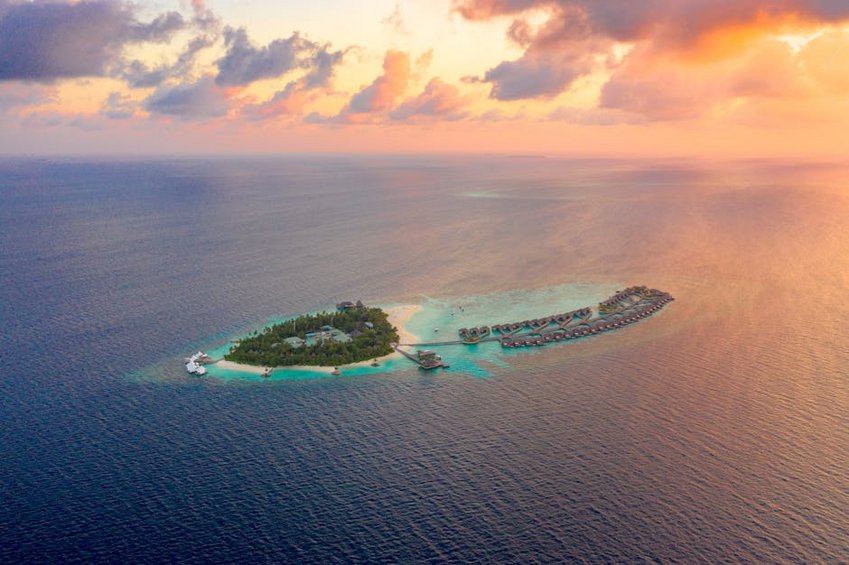Belize Great Blue Hole Diving: An Unforgettable Underwater Adventure
Belize Great Blue Hole diving offers one of the most spectacular underwater experiences on the planet, attracting adventure seekers from around the globe. This massive submarine sinkhole, located off the coast of Belize in the Caribbean Sea, spans over 300 meters across and plunges to depths of 125 meters, creating a unique diving environment filled with ancient stalactites and diverse marine life. As a UNESCO World Heritage site within the Belize Barrier Reef Reserve System, it provides not just thrilling dives but also a glimpse into geological history. You will find yourself descending into crystal-clear waters where visibility often exceeds 30 meters, surrounded by reef sharks, giant groupers, and colorful tropical fish. Whether you are an experienced diver or looking to advance your skills, this destination promises awe-inspiring moments and bragging rights for years to come. The combination of deep blue waters, dramatic underwater formations, and the sense of exploring a natural wonder makes Belize Great Blue Hole diving a bucket-list item for any serious traveler. Prepare to be amazed by the sheer scale and beauty of this iconic site, where every dive tells a story of Earth’s ancient past.
Belize Great Blue Hole Diving – Essential Information
Understanding the fundamentals of Belize Great Blue Hole diving is crucial for a safe and enjoyable experience. This natural wonder formed during the last ice age when sea levels were much lower, and it was once a dry cave system that collapsed as oceans rose. Today, it sits within the Lighthouse Reef Atoll, about 70 kilometers off the mainland, and is part of the larger Mesoamerican Barrier Reef System. Diving here typically involves a boat trip from islands like Ambergris Caye or Caye Caulker, with most tours departing early in the morning to capitalize on calm sea conditions. The dive itself is often conducted as a wall dive, allowing you to explore the vertical drop-offs and caverns filled with stalactites that date back thousands of years. You will need advanced open water certification or equivalent experience due to the depths involved, which can reach up to 40 meters on standard dives. Marine life encounters are common, including sightings of Caribbean reef sharks, nurse sharks, and occasional hammerheads, making it a paradise for underwater photographers. The site’s protected status ensures that conservation efforts minimize human impact, preserving its pristine condition for future generations.
What is the Great Blue Hole? – Key Facts
- The Great Blue Hole is a giant marine sinkhole measuring approximately 318 meters across and 124 meters deep, formed from a collapsed limestone cave system during Quaternary glaciation periods.
- It was made famous by Jacques Cousteau in 1971 when he declared it one of the top diving sites in the world, and it remains a flagship destination for scuba enthusiasts seeking unique geological formations.
- Located in the Lighthouse Reef Atoll, it is part of the Belize Barrier Reef, a UNESCO World Heritage site, and requires a permit for diving, which is usually included in tour packages.
- Budget options start at around $300 USD per person for a basic day trip including two dives, equipment rental, and lunch, ideal for travelers watching their expenses but still seeking the core experience.
- Mid-range packages cost between $400 to $600 USD and often include added perks like hotel transfers, additional reef dives, and professional photography services to capture your underwater moments.
- Luxury experiences can exceed $800 USD, featuring private boat charters, personalized guides, and combo tours that explore multiple atolls with gourmet meals and premium accommodations.
- Belize Tourism Board – Official travel information and updates
- PADI – Scuba diving certifications and safety guidelines
History and Formation – Geological Insights
The history of the Great Blue Hole spans over 150,000 years, beginning as a limestone cave during the last ice age when sea levels were significantly lower. As glaciers melted and oceans rose, the cave roof collapsed, flooding the chamber and creating the circular sinkhole we see today. Scientific expeditions have mapped extensive stalactite formations underwater, which provide clues about past climate conditions and sea-level changes. These formations are most visible between 30 to 40 meters depth, where divers can observe hanging structures that once formed in air-filled caves. The site’s geological significance adds an educational layer to your dive, connecting you with ancient Earth processes. Understanding this background enriches the experience, making it more than just an adventure but a journey through time.

Planning Your Belize Great Blue Hole Diving Trip
Proper planning is essential for a successful Belize Great Blue Hole diving excursion, as it involves logistical considerations like travel timing, budget, and physical preparation. Most divers visit between December and May when weather conditions are optimal, with calm seas and high visibility underwater. You will need to book tours in advance, especially during peak seasons, as daily visitor numbers are limited to protect the environment. A typical day trip includes boat transportation, gear rental, and guided dives, often combined with stops at other reef sites like Half Moon Caye or Long Caye. Budgeting should account for park fees, which are around $40 USD per person, and additional costs for certifications if you need to upgrade your diving skills. Physical fitness is important, as currents can be strong, and diving at depth requires good health to avoid decompression sickness. It is advisable to arrive in Belize a few days early to acclimate and possibly complete a refresher dive if you have not been in the water recently. This preparation ensures that you can fully enjoy the mesmerizing underwater landscapes without unnecessary stress.
Best Time to Visit for Diving – Seasonal Analysis
The best time for Belize Great Blue Hole diving is during the dry season from late December to April, when rainfall is minimal, and sea conditions are calm, offering visibility up to 50 meters. Water temperatures range from 26°C to 29°C (79°F to 84°F), making it comfortable for extended dives without thick wetsuits. Hurricane season from June to November can bring rough seas and reduced visibility, though it is still possible to dive if you monitor weather forecasts closely. Shoulder months like May and November provide a balance of decent conditions and fewer crowds, allowing for a more personalized experience. If you are planning a trip, aim for weekdays to avoid weekend rushes, and always check with local operators for real-time updates on marine conditions.
Budget Planning and Costs – Financial Breakdown
Essential Preparation Checklist – Practical Steps
Before embarking on your Belize Great Blue Hole diving adventure, complete a thorough preparation checklist to ensure safety and enjoyment. Verify that your diving certification is current and meets the requirements, typically Advanced Open Water or deeper specialty certifications. Pack essential gear like a dive computer, mask, and snorkel, though most operators provide tanks and regulators. Schedule a medical check-up if you have pre-existing conditions, as deep dives pose higher risks. Book accommodations in advance on islands like San Pedro or Caye Caulker, which serve as hubs for dive tours. Arrange travel insurance that covers scuba diving incidents, and familiarize yourself with emergency procedures for decompression sickness. Finally, hydrate well and avoid alcohol before dives to maximize your comfort and performance underwater.
Top Attractions and Activities Around the Great Blue Hole
Beyond the main dive, the area surrounding the Great Blue Hole offers a wealth of attractions and activities that complement your underwater exploration. The Lighthouse Reef Atoll is home to pristine coral gardens, secluded beaches, and bird sanctuaries, providing opportunities for snorkeling, kayaking, and wildlife watching. Half Moon Caye Natural Monument is a must-visit, featuring a lighthouse and breeding grounds for red-footed boobies and frigatebirds, making it a paradise for nature lovers. You can also explore the nearby Turneffe Atoll, known for its vibrant marine life and fishing spots, ideal for anglers seeking bonefish or tarpon. For cultural enrichment, visit the local Garifuna communities on the mainland to learn about their unique heritage and traditions. These diversions ensure that your trip is well-rounded, offering both adrenaline-pumping adventures and relaxing moments in nature. Whether you spend extra days island-hopping or simply enjoy the serenity of the Caribbean, there is something for every type of traveler.
Must-See Dive Sites – Highlight Reel
While the Great Blue Hole is the star attraction, nearby dive sites like the Aquarium and Long Caye Wall offer incredible biodiversity with shallower depths perfect for multi-level diving. The Aquarium features coral formations teeming with angelfish, parrotfish, and occasional sea turtles, providing a colorful contrast to the Blue Hole’s deep blue expanse. Long Caye Wall drops to over 1,000 meters in places, with sponges and gorgonians that attract larger pelagic species like eagle rays and dolphins. These sites are often included in combo tours, allowing you to experience varied underwater environments in a single day. Diving here enhances your appreciation for the reef’s ecosystem, highlighting the importance of conservation efforts in this fragile marine habitat.
Hidden Gems and Local Favorites – Off-the-Beaten-Path
For those seeking less crowded experiences, hidden gems like the Blue Hole’s lesser-known caverns or the secluded beaches of Northern Two Caye provide intimate encounters with nature. Local guides often share spots where you can snorkel among nurse sharks and stingrays in shallow waters, or explore mangrove forests that serve as nurseries for juvenile fish. On land, sample fresh seafood at family-run eateries in Caye Caulker, where the “go slow” philosophy encourages relaxation and connection with island life. These local favorites add authenticity to your trip, giving you a deeper insight into Belizean culture beyond the tourist trail.
Practical Travel Information for Belize Diving
Navigating the practical aspects of Belize Great Blue Hole diving involves understanding transportation, accommodation, and safety measures to ensure a smooth journey. Most international travelers fly into Philip S. W. Goldson International Airport (BZE) near Belize City, then take a domestic flight or water taxi to islands like Ambergris Caye, which serve as bases for dive operators. The country uses the Belize dollar (BZD), but USD is widely accepted, with an exchange rate of approximately 2 BZD to 1 USD. English is the official language, simplifying communication for US and EU visitors, and visa requirements are lenient for stays under 30 days for most Western passport holders. Accommodation ranges from budget hostels to luxury resorts, with many offering dive packages that include transfers and meals. It is essential to respect local customs, such as dressing modestly in towns and supporting eco-friendly businesses that contribute to reef conservation. By planning these details ahead, you can focus on the incredible diving experiences without unnecessary hassles.
| Category | Options/Features | Price Range (USD) |
|---|---|---|
| Accommodation | Beachfront hotels, eco-lodges, or hostels with dive packages | $50 – $400 per night |
| Dive Tours | Group trips, private charters, or multi-day packages | $300 – $800 per person |
| Transportation | Water taxis, domestic flights, or rental golf carts on islands | $20 – $150 round trip |


